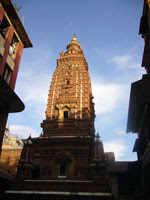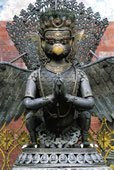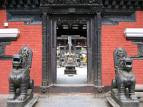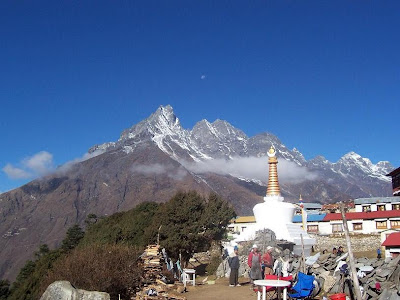
What is Trekking?
Trekking means to walk in hilly and mountain region by foot.So trekking is defined as a form of walking, undertaken with the specific purpose of exploring and enjoying the scenery. It usually takes place on trails in areas of relatively unspoiled wilderness. Trekking is one of the best way to visit different kinds of places and their most spectacular and beautiful scenery,peoples and to know their culture,language,tradition and beliefs.
| Mountain Trekking |
Nepal is one of the world's best destination to treks. Trekking in Nepal can be any time but best time to trek in Nepal is October and November because at this time weather is Neither so cold nor so hot, not raining and no cloudy, weather is very much comfortable
Annapurna Trekking
 Annapurna region is situated in the middle north Nepal and is defined by kali gandaki river to the west , the Marsyangdi and Dudh Khola valleys to the east, the Pokhara valley to the south and the Himalaya foothills that run along the Nepal-Tibetan border to the north. Annapurna trekking has been wildly recognized as a naturalist's paradise. The upper sub-alpine steppe environment harbors some of the rare snow leopards and blue sheep. Other areas of the region protect bird species such as the multi-coloured Impeyan, kokla, blood pheasant amongst a multitude of other birds, butterflies and insects. Many plants native to Nepal are found in this forest. The conservation area has 100 varieties of orchids and some of the richest temperate rhododendron forest in the world.
Annapurna region is situated in the middle north Nepal and is defined by kali gandaki river to the west , the Marsyangdi and Dudh Khola valleys to the east, the Pokhara valley to the south and the Himalaya foothills that run along the Nepal-Tibetan border to the north. Annapurna trekking has been wildly recognized as a naturalist's paradise. The upper sub-alpine steppe environment harbors some of the rare snow leopards and blue sheep. Other areas of the region protect bird species such as the multi-coloured Impeyan, kokla, blood pheasant amongst a multitude of other birds, butterflies and insects. Many plants native to Nepal are found in this forest. The conservation area has 100 varieties of orchids and some of the richest temperate rhododendron forest in the world.Optional Trekking routes in Annapurna area
Annapurna Circuit trek:Annapurna circuit trek gives you an opportunity to explore himalaya experience of your life time. This trek is one of contrasts between the green terraced farmland of the Marshyangdi valley 
Annapurna Base camp trek:The "Annapurna Base Camp" trek is dreamt by lots of tourists to touch the Annapurna Himal in beautiful trekking routes in Nepal just north of Pokhara .Annapurna base camp trek is famous for trekkers. The principal peaks of the western portion of the great Annapurna Himal, including Hiunchuli, Annapurna South,Fang Jomson Muktinath trek:Annapurna Jomsom Muktinath trek is situated North of Pokhara, Nepal's spectacular diversity appears at its finest The deep valleys and high mountains encircling the giant Annapurna Himal .Min. Altitude 830m/2723ft Max. Altitude 5416m/17769ft Age Limit 15-68 Grade Moderate**+fairly streneous*** 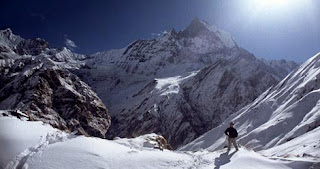
Min. Altitude 910m/2986ft Max. Altitude 4090m/13418ft Age Limit 15-68 Grade Moderate**
Ghorepani Poonhill trek:Annapurna Ghorepani Poonhill trek is a colourful short foray into the Annapurna region. The trail winds through patchwork valleys, dense mossy forests and past icy waterfalls . 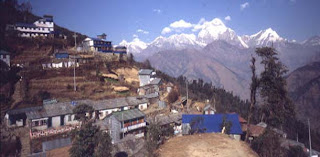
Min. Altitude 3190m/10367ft Max. Altitude 5416m/17769ft Age Limit 15-68 Grade Easy* 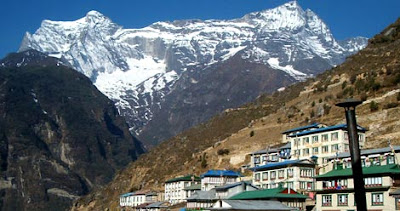
Min. Altitude 910m/2986ft Max. Altitude 3802m/12356ft Age Limit 15-68 Grade Moderate** Everest Trekking
 Mount Everest is the highest peak in the world. The Everest trek typically starts in Kathmandu with a coach trip to Jiri, followed by a week's trek to Lukla(2850m). From Lukla you walk to the famous sherpa village of Naamche Bazzar and on to the Tengboche Buddhist monastery, with its panaromic view of Mt. Everest(8,848m), Cho Oyu(8152 m), Lhotse(8516 m), Makalu(8463 m), and Ama Dablam(6556 m) .
Mount Everest is the highest peak in the world. The Everest trek typically starts in Kathmandu with a coach trip to Jiri, followed by a week's trek to Lukla(2850m). From Lukla you walk to the famous sherpa village of Naamche Bazzar and on to the Tengboche Buddhist monastery, with its panaromic view of Mt. Everest(8,848m), Cho Oyu(8152 m), Lhotse(8516 m), Makalu(8463 m), and Ama Dablam(6556 m) .Langtang trekking including Helambu and Gosaikunda trek
 This is a most exciting trek situated North of Kathmandu in the middle of great Himalayan range on the Tibetan border. This region bounds in natural and cultural blending several vegetation, endangered animal species including himalayan red panda, Musk deer, Himalayan black bear and common langur. This site has been identified as the most attracting and alluring holiday destination . Helambu situated north of kathmandu having many scenic village inhabitated by sherpa and tamangs. Gosaikunda , a glacier lake is the most famous lake .
This is a most exciting trek situated North of Kathmandu in the middle of great Himalayan range on the Tibetan border. This region bounds in natural and cultural blending several vegetation, endangered animal species including himalayan red panda, Musk deer, Himalayan black bear and common langur. This site has been identified as the most attracting and alluring holiday destination . Helambu situated north of kathmandu having many scenic village inhabitated by sherpa and tamangs. Gosaikunda , a glacier lake is the most famous lake .
| Fact of Helambu trek |
| Destination | Tharepati (3510m.) |
| Min. Altitude | 1360m. |
| Max. Altitude | 3510m. |
| Group Size | Min - 1 |
| Grade | Easy |
| Season | Spring & Autumn |
| Accommodation | Lodge or Tented |
| CampDuration | 12 |
| DayEntry | Sundarijal |
| Exit | Melamchi Pul |
Fact of Gosaikunda trek
| Destination | Gosainkunda Lake / Lauri Bina La pass (4610 meters) |
| Min. Altitude | 2030meter. |
| Max. Altitude | 4610 meter |
| Group Size | Min - 1 |
| Grade | Moderate |
| Season | Spring & Autumn |
| Accommodation | Guesthouse |
| CampDuration | 12 |
| DayEntry | Dhunche |
| Exit | Sundarijal |
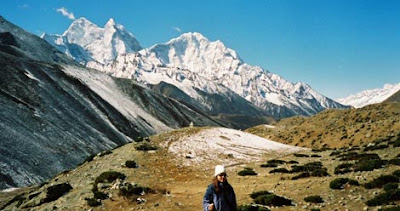






































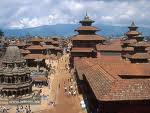



 Balaju consists of a sprawling garden of stone water spouts, religious shrines, fish ponds, and a replica of statue of Budanilkantha. Situated below Nagarjun hill about 3 km northwest of the city center. Balaju is also known for its bank of 22 stone water spouts carved in the shape of sea-dragons.
Balaju consists of a sprawling garden of stone water spouts, religious shrines, fish ponds, and a replica of statue of Budanilkantha. Situated below Nagarjun hill about 3 km northwest of the city center. Balaju is also known for its bank of 22 stone water spouts carved in the shape of sea-dragons. 


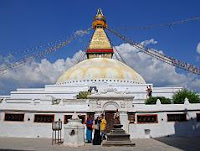 B
B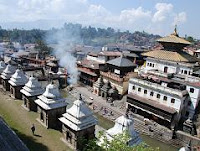 Pashupat
Pashupat Changu Narayan Temple is situated on a ridge overlooking the Valley about 12 km to the east of the city. It is dedicated to the Hindu god Vishnu. One of the finest and oldest specimens of pagoda architecture, the temple is embellished with exquisite wood and stone carvings.
Changu Narayan Temple is situated on a ridge overlooking the Valley about 12 km to the east of the city. It is dedicated to the Hindu god Vishnu. One of the finest and oldest specimens of pagoda architecture, the temple is embellished with exquisite wood and stone carvings. 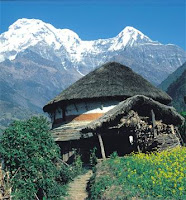 Kirtipur is situated on a ridge 10 km southwest of Kathmandu. The ancient Newar township is a natural fortress and has a proud and courageous history. The Chilamchu stupa and the temple of Bagh Bhairav are major sites here.
Kirtipur is situated on a ridge 10 km southwest of Kathmandu. The ancient Newar township is a natural fortress and has a proud and courageous history. The Chilamchu stupa and the temple of Bagh Bhairav are major sites here.
 Kwa Bahal is a Buddhist monastery courtyard dating back to the 12th century. It is a five minute walk west and north from the northern end of Durbar Square. The monastery building is embellished with exceptionally fine wood carvings and repousse work. Artistic image are scattered around the courtyard and devotees can be seen offering worship at many shrines here.
Kwa Bahal is a Buddhist monastery courtyard dating back to the 12th century. It is a five minute walk west and north from the northern end of Durbar Square. The monastery building is embellished with exceptionally fine wood carvings and repousse work. Artistic image are scattered around the courtyard and devotees can be seen offering worship at many shrines here. 
